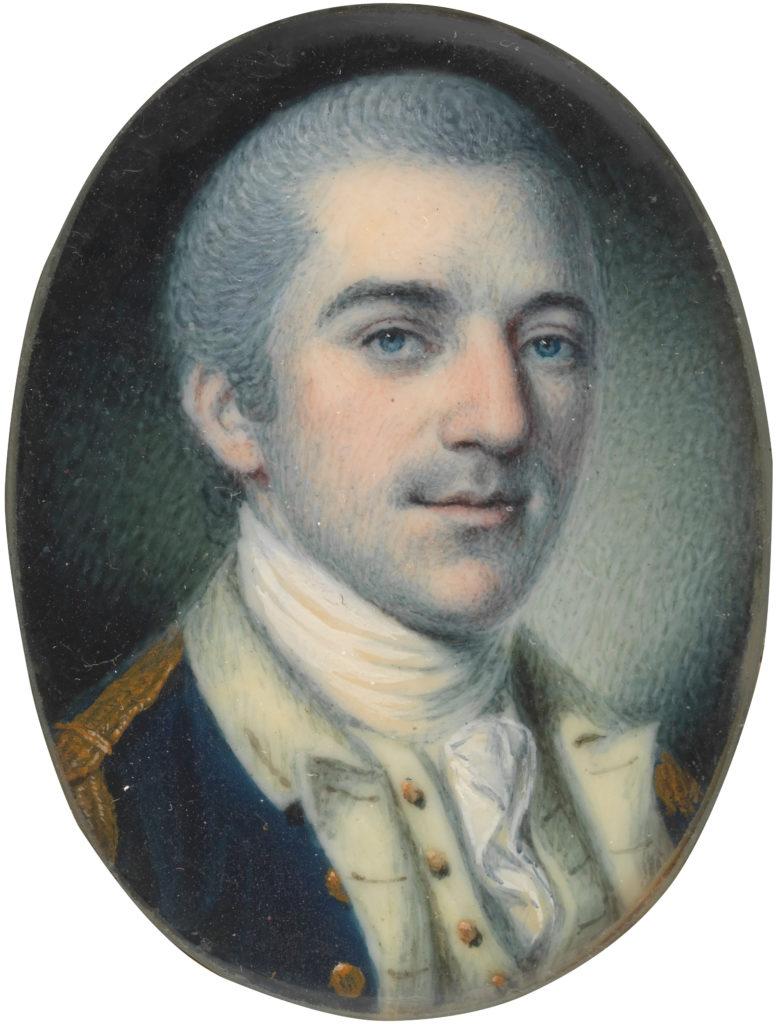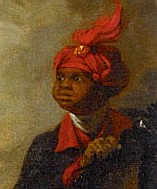Life, Love & Sodomy Law

The concept of same-sex relations being illegal is ever-present in any discussion of historical sexuality in the United States, be it in biographies by well known historians or fanfiction by fans of the musical Hamilton. With different facts being thrown around, the reality of these laws and their effects on the everyday lives of LGBT+ people becomes rather murky. These laws presented a bigger obstacle to LGBT+ peoples’ freedom and happiness than some people realize, and a smaller obstacle than others assume. The reality is that they affected people in nuanced ways, and that these effects varied by gender, class, race, and slave/free status.
Sodomy Laws At the Time
Before the practical effects of sodomy laws in the mid-to-late seventeen hundreds United States can be analyzed, it is important to have an idea of the general state of sodomy law in the US at that time. Of the original thirteen colonies, twelve had sodomy laws during this era, with Georgia being the one exception. Of these twelve, seven initially criminalized sodomy only when it happened between men, and six still only criminalized it between men when a general shift towards criminalizing it for everyone began to happen around 1810. Only one, Connecticut, criminalized female-female sex, from 1656 to 1811. Three of the twelve at some point during this period had a separate (and harsher) punishment for enslaved people. Delaware listed a specific punishment for African-Americans (not just enslaved people), but it was the same as the other punishment Delaware had listed.¹
How much impact did sodomy laws really have?
Historians often claim that sodomy law is not a significant part of any historical narrative because from the birth of the United States until more modern times there were only a handful of convictions. This understanding is based on the fact that it is very hard to find records that are easily identifiable as sodomy trials. In reality this may not actually mean there were few trials. According to historian William E. Benemann, it is likely that most records of trials for sodomy were deliberately worded in vague, euphimistic language. Searching through the records of the Continental Army, Benemann found two court martial records that explicitly state they were court martials for same-sex relations, but Benemann believes there were others. The records of most court martials in the Continental Army were incredibly thorough, giving every possible detail of the offense committed. Occasionally however, one finds records that are vague and unclear. These will often describe the offense simply as “indecency,” or “conduct unbecoming of an officer and a gentleman.” Benemann believes that these remarkably unclear court martial records are from sodomy convictions, and that they deliberately did not mention same-sex relations so as not to cast shame on either the people involved or their commander and unit.² It is likely that this kind of thinking existed outside of the Army as well; at the time it was considered improper to even talk about things of that nature, so courts may not have wanted to record what they saw as obscene details. They may also have wanted to spare the reputation of families, friends and other associates of the accused, as well as perhaps the accused in case they turned out to be innocent. Because these records are easily overlooked, it is often assumed that sodomy laws were rarely enforced when this is not the case.

It is also possible however to go too far the other direction, and assume that all LGBT+ people (particularly men) lived in constant fear of the day when they would be arrested. This is inaccurate for several reasons. First of all, class differences must be considered. A template for court documentation written in Virginia in 1810 displays the assumption that everyone charged with sodomy would be a “labourer.” Working class men therefore likely had more reason to fear being charged than upper class men.³ A man like Lt. Col. John Laurens, for example, would not have spent time worrying that he would be arrested for sodomy. Laurens’s wealth and prominent family would have shielded him. Instead, Laurens probably feared that if he was exposed he would be disowned by his family and shunned by all acquaintances. Perhaps more than anything else, Laurens probably feared the destruction of his reputation and legacy. It would be unfair to call these concerns trivial: to Laurens being outed would have seemed like the end of the world. But while Laurens’s fears are no less valid, it is important to remember they are different from the fears of a man without Laurens’s wealth and power.
Even for working class men though, the fear of prosecution was not a constant concern. According to historian Rictor Norton, ordinary people rarely took it upon themselves to report aquaintances they suspected of having same-sex encounters to the authorities. They might be intensely homophobic, but they would likely express this only by talking badly about their LGBT+ aquaintances behind their backs.⁴ It is worth noting that Norton studies England, and that homophobia in the United States may have manifested itself a little differently. Still, the idea that most homophobic people would have contended themselves with being cruel in small, quiet ways seems more logical than the idea that average people would have taken to the streets as anti-gay vigilantes. This is not to say that no one did, just that most people did not care enough to join them.
How did it affect enslaved people differently?
There were three colonies/states that punished enslaved people differently. Though these states had laws that referred to “slaves,” they may have actually just meant African-Americans. As mentioned above, a fourth state, Delaware, has a separate note that the punishment for sodomy committed by “negroes or mulattoes” was death (although the punishment was death for white people as well).⁵ Delaware is the only state that mentioned African-American people rather than slaves, and it is possible that this means that when the other states said “slaves” they actually meant African-American people. Regardless of the actual technicalities of these laws, it is possible that an African-American man arrested for sodomy would be tried as a slave even if he were free.
The three states whose laws had different punishments for enslaved people were Maryland, Pennsylvania, and Virginia. In Maryland the punishment was death for everyone until 1793, when it became seven years imprisonment with hard labor for free people and fourteen years imprisonment with hard labor for slaves. In Pennsylvania’s earliest days the punishment for free people was life in prison, the punishment for slaves death. In 1718, Pennsylvania adopted English Common Law, and the punishment became death for everyone. In Virgina English Common Law was adopted around 1624, and so the punishment was death for everyone until Virginia created a sodomy statute in 1800, which made it 1-10 years in prison for free people but retained the death penalty for slaves. In 1848 it became 1-5 years for free people, but the death penalty would remain for slaves until 1860.⁶ In all other states the law presumably applied regardless of slave/free status or race, though racism may still have caused it to fall more harshly on African-Americans when the punishment was variable (when it was 1-10 years, for example).
Despite the existence of these laws, any reader of history is left wondering whether enslaved people actually found themselves in criminal court for same-sex relations or if punishment was typically meted out informally by slaveholders. Slaves were in fact frequently formally charged with crimes; one the other hand, the shame around this particular offense may add another dimension to this question.⁷ If, as Benemann believes, it reflected badly on a military commander for his men to be caught having same-sex intercourse, it is possible it would have brought shame to a slaveowner as well. This makes it likely that two slaves caught breaking sodomy law would have been punished by their owner, without the rest of that area’s white community knowing.
So why were punishments ever different for slaves? Obviously general racism played a role in making punishments for a variety of crimes harsher when they were applied to enslaved people. There is however a more specific reason: slaveowners wanted their slaves to reproduce.⁸ This became a bigger deal for slaveowners after the importation of slaves was banned in 1807, but enslaved people having children was always better for slaveowners, as it saved money and allowed morally askew slaveowners to feel good about themselves for not purchasing any more slaves.

To that end, slaveowners believed it was their right to control their slaves’ sexual and romantic lives minutely. In the days after the Importation Ban, this could mean things as drastic as locking two slaves in a room together or forcing married couples who failed to reproduce to separate.⁹ Before the ban, this manifested in somewhat less aggressive but still invasive ways, like making enslaved couples get their owner’s permission to marry.¹⁰ This was the case for William Lee, who met his wife Margret Thomas in 1775. At some point Lee and Thomas began to consider themselves married, but they faced an interesting complication: Thomas was free. Lee asked his owner, George Washington, to let Thomas come and live at Mount Vernon, and Washington (begrudgingly) seemed to grant his permission. For whatever reason however, there is no record of Thomas ever living with Lee.¹¹ Though Lee and Thomas’s story has additional factors, slaveowners felt justified in deliberating over whether or not to grant permission for a marriage even when both people were slaves on the same plantation.¹² They felt it was their right to control who married who, and in that way try to control who had sex with who.
The harshness of sodomy laws towards enslaved people can clearly be seen as an outgrowth of this. Slaveowners did not tolerate non-reproductive sexual relationships between slaves whom they felt should be reproducing so they could own more slaves. An interesting question then is whether slaveowners were using these laws to discourage enslaved men and women having non-procreative sex, or if they were actively concerned about same-sex intercourse between slaves. Some insight into this may be found by looking at whether the states that had separate sodomy laws for slaves were also the states that legally defined sodomy as an act between two people of the same sex. Maryland operated off of English Common Law (which only penalized male-male sex) until 1793, when they adopted a new law that still seems to have only penalized male-male sex. It was not until 1847 that Maryland’s sodomy law seems to have become applicable to male-male or male-female sex. Pennsylvania relied on Common Law for their sodomy statue from 1718 until 1786, when the new statute made it so the law may have been applicable to couples of any sex configuration. In Virginia the law only applied to male-male couples until 1792, when interesting wording made it so men or women could commit sodomy, but only on men.¹³ Since all of three states that had separate punishments for slaves initially stipulated that sodomy was between two men, it seems likely that the goal was to try to force all male slaves to be straight. That being said, female slaves caught having intercourse together or male and female slaves caught having non-reproductive intercourse together may have been punished by individual slaveowners.
Six out of thirteen original colonies criminalized same-sex relations during the Revolutionary and Early Republic Eras. This meant different things for different LGBT+ people, depending on gender, class, race, and slave/free status. Sodomy law was something all LGBT+ people were aware of, something that would have lurked at the back of their minds. LGBT+ people knew that their government did not include them in its protection, and everyone else knew this too. Still, they would not have thought about it constantly. Countless LGBT+ people, some of whom we will never know about, doubtlessly embarked on sexual relationships that went very well, or at least went normally. For enslaved LGBT+ people this was of course more difficult. Sexual behavior was policed for everyone, but in the case of slaves society truly felt it had the right to demand they obey the rules. But humans will have the relationships they want to in spite of all kinds of possible consequences, and so for slaves embracing one’s LGBT+ identity became another way to claim the personhood society sought to deny them. And so, though they lived in a hostile society, together many LGBT+ people were able to snatch a little of the happiness they deserved.
If you appriciate my work, please consider becoming my Patron! 18th Century Pride is creating LGBT+ History Content | Patreon
- The Sensibilities of Our Forefathers, George Painter, https://www.glapn.org/sodomylaws/usa/usa.htm (Select a state and then select “The Sensibilities of Our ForeFathers” to view Painter’s information on that particular state.)
- Male-Male Intimacy in Early America: Beyond Romantic Friendships, William E. Benemann, 73, https://books.google.com/books?id=Isi3AwAAQBAJ&dq=male+male+intimacy+in+early+america&q=indecency#v=snippet&q=indecency&f=false
- The Sensibilities of Our Forefathers, “Virginia”, George Painter, https://www.glapn.org/sodomylaws/sensibilities/virginia.htm
- Rictor Norton, “Popular Rage (Homophobia)”, The Gay Subculture in Georgian England, 16 August 2009 <http://rictornorton.co.uk/eighteen/homophob.htm>.
- “Delaware”, George Painter, https://www.glapn.org/sodomylaws/sensibilities/delaware.htm
- See #1
- “Slave Code”, Editors of Encyclopedia Britannica, https://www.britannica.com/topic/slave-code
- “Sexuality and the Slave Community”, Steven E. Brown, https://www.jstor.org/stable/274880?seq=1
- Ibid., and “Good Breeders”, Marie Jenkins Schwartz, https://slate.com/human-interest/2015/08/how-enslaved-womens-sexual-health-was-contested-in-the-antebellum-south.html
- “”My Love Is Black as Yours Is Fair”: Premarital Love and Sexuality in the Antebellum Slave Narrative”, Maria Diedrich, https://www.jstor.org/stable/274991?Search=yes&resultItemClick=true&searchText=slave&searchText=sexuality&searchUri=%2Faction%2FdoBasicSearch%3FQuery%3Dslave%2Bsexuality&ab_segments=0%2Fbasic_SYC-5187%2Ftest&refreqid=search%3A86e325aedbf17a23e0af2f8d0e853f6b&seq=1
- “William (Billy) Lee”, https://www.mountvernon.org/library/digitalhistory/digital-encyclopedia/article/william-billy-lee/
- See #10
- See #1